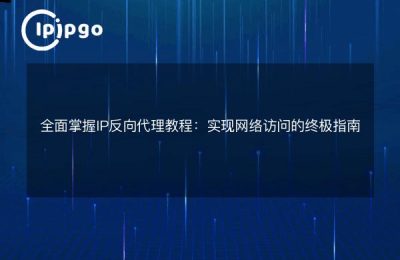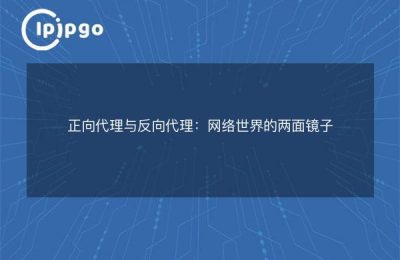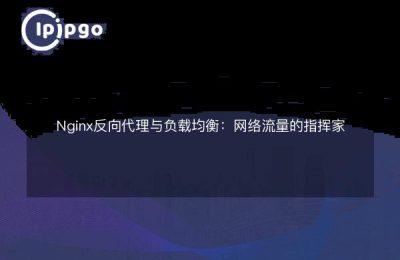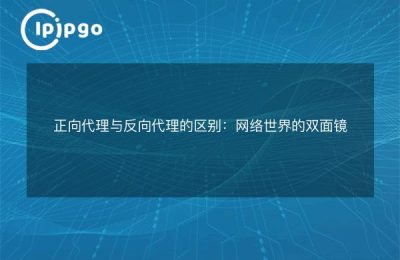
How to Configure Caching for Nginx Reverse Proxy
Today I want to share with you about the cache configuration method of Nginx reverse proxy. As an author who specializes in IP proxy knowledge, I know that Nginx, as a very popular high-performance HTTP and reverse proxy server, its cache configuration has a very important impact on website performance and user experience. In this article, I will use a lively and interesting tone to provide you with a detailed introduction to the cache configuration methods of Nginx reverse proxy.
1. Enable Nginx's caching function
Before proceeding with Nginx's cache configuration, we first need to make sure that Nginx's caching is turned on. In the configuration file, we can enable Nginx caching by adding the following code:
http {
proxy_cache_path /path/to/cache levels=1:2 keys_zone=my_cache:10m max_size=10g inactive=60m use_temp_path=off;
proxy_temp_path /path/to/temp; proxy_cache my_cache_path=off; proxy_temp_path /path/to/temp
proxy_cache my_cache; proxy_cache_key 1TP
proxy_cache_key $host$uri$is_args$args; proxy_cache_key $host$uri$is_args; proxy_cache_valid 200
proxy_cache_valid 200 302 30m; proxy_cache_key
proxy_cache_valid 404 1m.
proxy_cache_valid any 5m; proxy_cache_valid
}With the above configuration, we specify the cache path, cache area size, cache validity and other information. At the same time, we also specify the key of the cache and the validity period of the cache to ensure that the cache can make different caching policies according to different requests.
2. Configure Nginx cache rules
A good caching rule can bring a big boost to the performance of a website. In Nginx, we can configure different cache rules to meet different needs.
For example, we can set the caching rules for a specific path with the following code:
location / {
proxy_pass http://backend;
proxy_cache my_cache; proxy_cache_key $host$request_uri;
proxy_cache_key $host$request_uri; proxy_cache_valid 200 304 1h; proxy_cache_valid 200 304 1h
proxy_cache_valid 200 304 1h; proxy_cache_valid any 5m; proxy_cache_valid any 1m
proxy_cache_valid any 5m;
}With the above configuration, we specify caching of requests under the root path. Specifically, we set the cache key to the request host and request URI, and cache responses with 200 and 304 status codes for 1 hour and responses with any other status code for 5 minutes. In this way, for the same request, Nginx will return the data directly from the cache, which improves the response speed and user experience of the website.
3. Refreshing the cache
When we update the content of our website, we need to refresh the cache in time so that users can see the latest content. In Nginx, we can flush the cache in the following ways:
- Empty cache directory: Empty the cache by deleting all files in the cache directory. This can be done using the following command:
“`
rm -rf /path/to/cache/*
“`
- Refreshing individual URLs: You can force Nginx to re-request and cache the latest response by modifying the URL's parameters or adding specific configuration to the configuration file. For example, add the following code to the configuration file to refresh a single URL:
location /refresh {
proxy_pass http://backend;
proxy_cache_bypass $http_cache_control; proxy_cache_revalidate on; proxy_cache_revalidate; proxy_cache_revalidate on
proxy_cache_revalidate on; proxy_cache my_cache; proxy_cache my_cache
proxy_cache my_cache; proxy_cache_revalidate on; proxy_cache my_cache
}With the above configuration, we associate a specific URL path (/refresh) with the back-end server, and when a request is sent to this path, Nginx bypasses cache control and forces a re-request and caches the latest response.
4. Monitoring and optimizing the cache
Finally, a good cache configuration needs to be monitored and optimized to ensure that the cache is working and performing at its best.
Cache hit rate and cache usage can be monitored through tools such as Nginx logs and access statistics. At the same time, we can also optimize the cache configuration by adjusting parameters such as cache size, cache validity, and cache policy to improve website performance and user experience.
summarize
Through the introduction of this article, we have learned how to configure the cache for Nginx reverse proxy. By turning on Nginx's caching feature, configuring cache rules, flushing the cache, and monitoring and optimizing the cache, we can effectively improve the performance of the website and user experience. I hope this content is helpful, thanks for reading!








